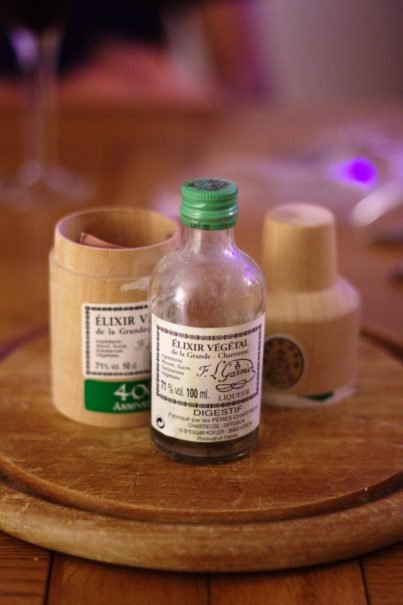
The Only Liquor So Good They Named a Color After It

The Only Liquor So Good They Named a Color After It
Chartreuse in Voiron
Chartreuse is beautiful. It’s the only naturally occurring green liqueur in the world, according to its makers. It is also perhaps the only alcoholic drink to lend its name to a color. I can’t remember when and where I first tasted it, but it was definitely as a digestif, and I loved its “good bitterness,” a term they use at the Chartreuse distillery and something people either don’t like or really, really love.
My French friends joke that it’s medicine, which is actually true. The distillery says it was christened some three centuries ago as an “Elixir of Long Life” and was used to treat various ailments. The elixir was so delicious, however, that people began drinking it like a regular beverage, and so a sweeter, less potent version soon began to be produced for general consumption.
Mystery infuses the history of this florescent-looking liquor. It all began in 1605, when the Carthusian religious order outside Paris was entrusted with an alchemist’s recipe (at that time only a handful of monks and apothecaries really knew how to use herbs to treat illness). The recipe was subsequently sent to the Carthusian headquarters near Grenoble where the resident apothecary expert decoded the intricate instructions and began producing the tonic in 1737.
When I visited the idyllic monastery and Musée de la Grande Chartreuse a few years ago, I had one of those “Aha!” moments because the surrounding countryside of the Isère region is the same vibrant green as Chartreuse, as if the hills themselves were macerated and distilled to make that chlorophyll color. In fact, only 65 percent of the plants and roots are from the Chartreuse Mountains. The rest come from other parts of France and even the world.
Blended from over 130 different types of botanicals, the exact recipe is a carefully guarded secret. Only two monks at any given time know it. At the distillery in Voiron, a short train ride from Lyon or Grenoble, you can sniff different herbs and plants which might be in the mixture, such as marjoram, mugwort, wild thyme, hyssop, gentians, and fir shoots. But above the display is a sign that teases: “We do not know if these plants are among the 130 plants used to make Chartreuse….”
At the distillery, I also learned about different tributes to the cordial. My favorite was from Quentin Tarantino, when he played a barman in his movie Death Proof. After offering a round of Chartreuse shots and downing his own, he slams down his glass saying, “Chartreuse, the only liqueur so good they named a color after it.”